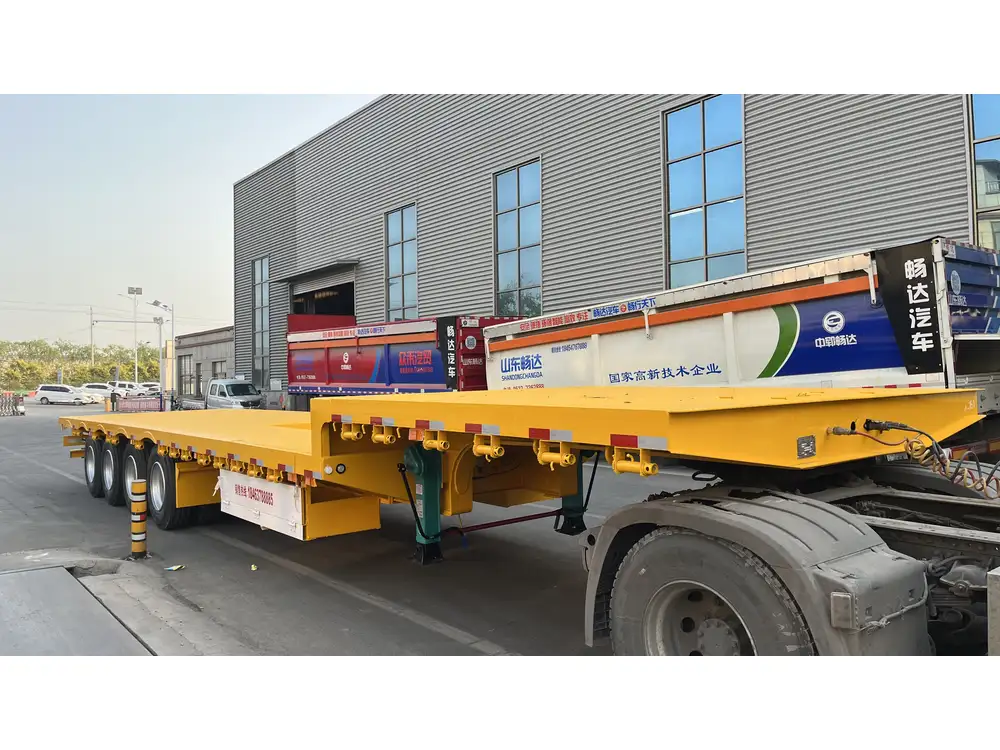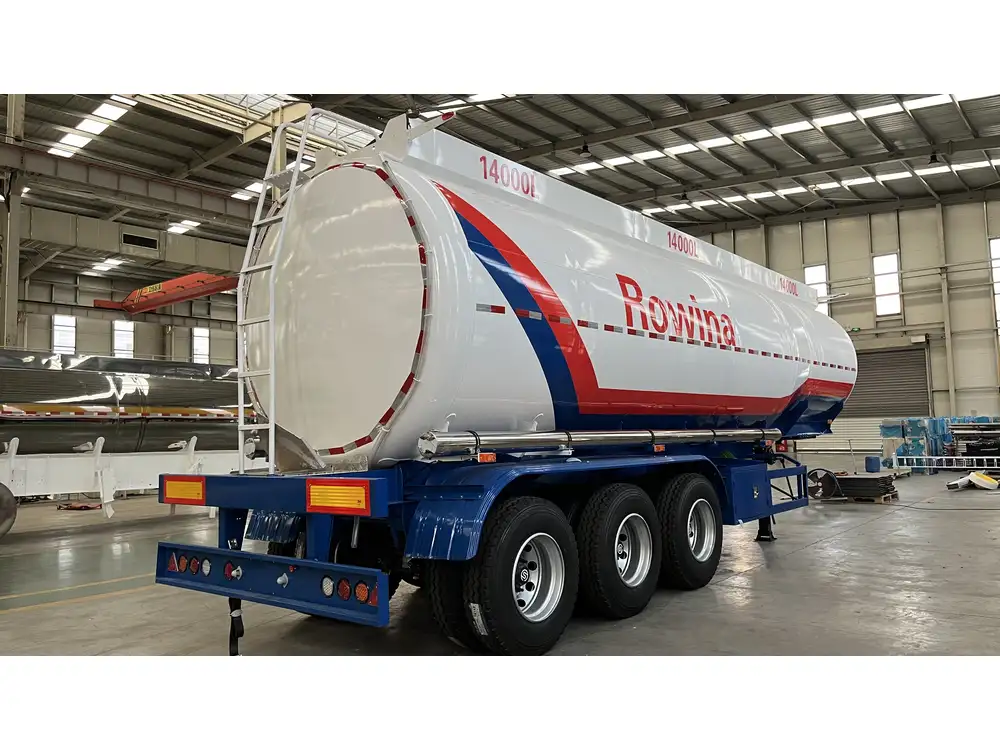Water trucks play a critical role in a variety of industries, from construction to agriculture, ensuring that water is transported safely and efficiently. However, one of the most fundamental questions that arise for operators, project managers, and business owners is, “How much water can a water truck hold?” This article dives deep into the topics surrounding water truck capacities, providing comprehensive insights that can help you select the right vehicle for your needs.
Types of Water Trucks
Understanding the different types of water trucks available is essential for making informed decisions. Below, we outline the three primary types:
| Type | Description | Typical Capacity |
|---|---|---|
| Standard Water Truck | Designed for general-purpose water transportation in construction and dust control. | 1,000 to 4,000 gallons |
| Specialized Water Truck | Equipped for specific tasks, such as agricultural irrigation or firefighting. | 2,000 to 8,000 gallons |
| Tanker Water Truck | Large units designed for high-volume transport, often used in municipal services or industry. | 5,000 to 12,000 gallons |
Standard Water Trucks
Standard water trucks are versatile vehicles commonly used at construction sites to control dust and provide water for various activities. The capacity of these trucks usually ranges from 1,000 to 4,000 gallons. The selection of a specific capacity should take into account the job’s needs and the truck’s maneuverability on-site.

Specialized Water Trucks
Specialized water trucks are engineered for specific applications, such as agricultural irrigation, where precise water delivery is crucial. These trucks often come equipped with advanced systems for efficient distribution and can hold anywhere from 2,000 to 8,000 gallons of water, depending on the model.
Tanker Water Trucks
If your project demands high-capacity transport, tanker water trucks are the ideal choice. These vehicles can carry substantial amounts of water, ranging from 5,000 to 12,000 gallons. They are especially popular in municipal services and industries requiring significant water supply, such as mining or oil drilling.
Factors Influencing Water Truck Capacity
When assessing how much water a truck can hold, several factors come into play:

1. Design Specifications
Each water truck design has a predetermined tank size. For example, municipal water trucks may be designed with larger capacity tanks compared to those intended for smaller construction sites. Always refer to the manufacturer’s specifications to understand the exact capacities.
2. Material and Weight Considerations
Different materials used for tank construction may affect both capacity and water density. Most tanks are made from steel or aluminum, which also influences the truck’s gross vehicle weight rating (GVWR). It’s crucial to consider this when planning water transport as exceeding weight limits can cause vehicle strain and legal issues.
3. Regulatory Limitations
Transportation regulations vary by region, influencing the maximum allowable weight and water capacities. Monitoring local laws ensures compliance and helps avoid fines and liabilities associated with overweight vehicles.

Uses of Water Trucks and Implications of Capacity
Construction Site Operations
On construction sites, water trucks are essential for dust control, providing water for mixing concrete, and ensuring that site conditions remain manageable. Here’s how capacity plays a role:
- Dust Control: Larger water trucks can make fewer trips, significantly reducing downtime and improving work efficiency.
- Material Mixing: Adequate water supply is crucial for material quality. The right-size truck ensures consistent mixing and availability.
Agricultural Needs
In the agriculture sector, water trucks are vital for irrigation and maintaining crop health. Higher capacities enable:
- Extended Irrigation Periods: Increasing the water volume per trip minimizes the frequency of refills, allowing continuous irrigation schedules that enhance productivity.
- Efficiency: Specialized delivery systems in larger trucks can distribute water over larger areas, ensuring crops receive adequate moisture without delay.

Firefighting Applications
Firefighting relies heavily on rapid water delivery. Tanker trucks with substantial capacity are crucial for:
- Rapid Response: In emergencies, having a larger capacity truck available can significantly impact firefighting efficiency.
- Continuous Supply: Large water trucks can support prolonged operations, ensuring that firefighters are consistently supplied with the necessary water to combat blazes.
Understanding Measurements of Water Truck Capabilities
Gallons vs. Liters
Water capacity is often measured in gallons in the United States, but international contexts may prefer liters. Here’s a quick reference for converting between the two:
| Gallons | Liters |
|---|---|
| 1,000 gallons | 3,785 liters |
| 2,000 gallons | 7,570 liters |
| 3,000 gallons | 11,356 liters |
| 4,000 gallons | 15,141 liters |
| 5,000 gallons | 18,927 liters |
| 10,000 gallons | 37,854 liters |
Understanding this conversion allows operators working internationally to better communicate capacity requirements.

Choosing the Right Size
When choosing the appropriate water truck size for tasks, consider:
- Project Scope: What is the total water requirement over the project’s lifespan? Larger projects may necessitate higher-capacity trucks.
- Accessibility: Smaller trucks may be more maneuverable in tight spaces, so consider the site layout when deciding on truck size.
- Frequency of Fill-ups: Assess how often you will need to refill the truck. A larger capacity might reduce the frequency of trips.
Cost Considerations for Water Trucks
Initial Investment
Investing in a water truck involves upfront costs, which can vary significantly based on capacity, type, and brand. Prices may range from $30,000 for smaller models to over $100,000 for larger, specialized tankers.

Operating Costs
- Maintenance: Regular maintenance is essential for ensuring efficiency and longevity. This includes checks on the pump system, tank integrity, and vehicle condition.
- Fuel Consumption: Larger trucks generally consume more fuel, impacting the overall operating costs. Utilizing smaller trucks for specific tasks can sometimes be more economical.
Resale Value
Water trucks can retain a good portion of their value, especially specialized models. Factors influencing resale value include:
- Condition: Well-maintained vehicles are more likely to yield higher resale prices.
- Market Demand: During environments where water truck usage spikes, reselling can be profitable.
Conclusion: The Key Takeaways on Water Truck Capacities
Choosing the right water truck necessitates an understanding of how much water each type can hold and the various factors influencing capacity and usage. By considering the project requirements, frequency of trips, cost implications, and operational efficiency, vehicles can be selected that best align with project needs and budgets.
As water trucks continue to play an indispensable role across multiple industries, staying informed about their capacities and specifications will enable users to enhance their productivity, comply with regulations, and optimize their investments.
For industries relying heavily on water transportation, knowledge and clarity around these vehicles’ functionalities create not only operational advantages but profound impacts on project success rates.



